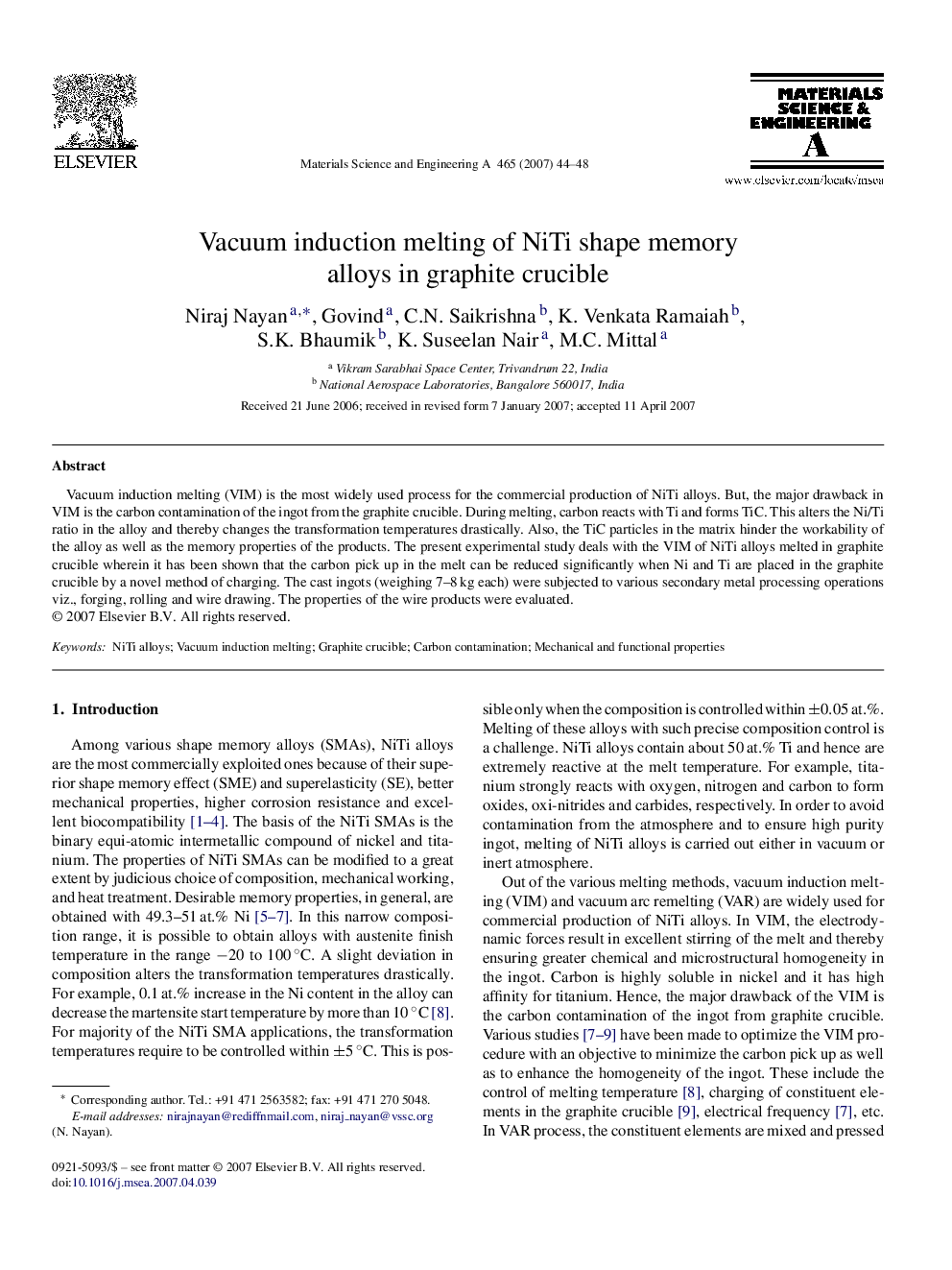| Article ID | Journal | Published Year | Pages | File Type |
|---|---|---|---|---|
| 1583496 | Materials Science and Engineering: A | 2007 | 5 Pages |
Vacuum induction melting (VIM) is the most widely used process for the commercial production of NiTi alloys. But, the major drawback in VIM is the carbon contamination of the ingot from the graphite crucible. During melting, carbon reacts with Ti and forms TiC. This alters the Ni/Ti ratio in the alloy and thereby changes the transformation temperatures drastically. Also, the TiC particles in the matrix hinder the workability of the alloy as well as the memory properties of the products. The present experimental study deals with the VIM of NiTi alloys melted in graphite crucible wherein it has been shown that the carbon pick up in the melt can be reduced significantly when Ni and Ti are placed in the graphite crucible by a novel method of charging. The cast ingots (weighing 7–8 kg each) were subjected to various secondary metal processing operations viz., forging, rolling and wire drawing. The properties of the wire products were evaluated.
